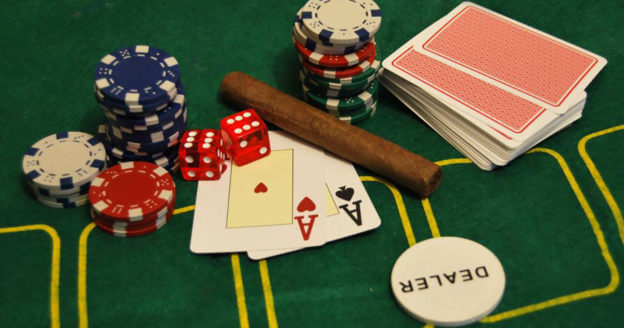It is never wrong to affirm that poker is a game of skill and not luck. This is one of the more beatable games you can enjoy in the casino. An important skill that cannot be ignored is bluffing. This is the direct opposite of value bets that ensures that an opponent lays down a better hand than you hold. Mastering the art of bluffing is not beyond anyone, but it takes practice. For this reason, this guide will expose you to the art of bluffing in poker. Now, let’s dive in!
Table of Contents
Different Types of Bluffs
A bluff can take many forms in poker, and each situation can fall into more than one category. They include;
Continuation Bet Bluff
A bet like this depends on the fact that your opponent will not connect with the board.
Semi Bluff
It’s a bet you place if your hand has little or no showdown value at the moment, but you have a decent chance of making a great hand. Flush draws and straight draw sare examples.
Zero Equity/Stone Cold Bluff
There is little chance that you will improve to the best hand and you rely entirely on fold equity to show a profit in this bluff.
Opportunistic Bluff
A bluff like this occurs when no one else in the hand is interested in the pot. If no one else has a strong hand, then this bet should show a profit enough often to make you money.
Purpose of Bluffing
Bluffing is the same as betting for value in that it gives you the chance to win and make profit. A player is more likely to be read easily if they only base their strategy on betting when they have a strong hand. New players make this error all the time. Here are few mistake players make when bluffing;
- The majority of players who take up the game tend to bluff way too often or play too aggressively.
- Playing too passively, or failing to bluff sufficiently.
- Despite the fact that these errors can be ignored if the stakes are low, half-decent players will punish you harshly.
What to Consider Before Bluffing
Part of what makes a good poker player is knowing when to bluff. To pull this off while preventing a costly mistake, there are certain requirements to consider before you resort to bluffing. Some of these are introduced as follows:
Your opponents
This is the most important consideration that must not be ignored. What makes your bluffs successful or not is your opponents. You win the hand if you bet and your opponent folds, making your bluff work. However, your bluff fails if he calls after you bet. Now, how can you influence your opponent’s behavior? You both bet your hands. Yet, it must be stressed that there are various kinds of poker players and you must consider your opponent before making a bluff.
It is only wise to avoid bad targets for your bluffs. Indeed, it is harder to bluff a bad player than a good player. For this reason, you would not want to bluff a bad poker player who does not even care about your bet whenever he wants to fold or call. Besides, you shouldn’t bluff a player who is too loose to lay down their hands to your bet.
Bets or games can also be enjoyed without actively playing them. One of the ways to enjoy is by watching and check how to get bet365 bet credits. So irrespective of what your want to do, we have a section for you
Bet sizes
When you are playing no-limit poker, you must consider your bet size whenever you want to bluff. You should wager the least amount that can make your opponent fold. You might think that your opponent will be more likely to fold as you raise your bet. Yet, that is rarely the case. It is wise to consider the limits beyond which your opponents cannot call. This is the point you will want to get close to.
Strength of your hand
When your hand has no chance of success if your opponent does not fold, you are making pure bluffs. However, when your bluffs are combined with hands that have a good possibility of improving as the hand develops, then you are making semi-bluffs. Generally, semi-bluffs are more likely to win you money than pure bluffs. The former can be thought of as bluffs with backup plans.
You should be able to visualize your opponent’s range in any specific circumstances. This helps you to accurately assess their ratio of weak hands to strong hands. Once you can do this, you will find that “thin” bluff that adds little profit, but often adds up to a reasonable sum over time.
Furthermore, you should also consider how your opponents can perceive your hand range. The bluffs you make must be believable to your opponent. Your bluff will fail if you find it hard to credibly represent a strong hand.
You must consider these factors whenever you are deciding whether to bluff or not.
Conclusion
Mastering the art of bluffing is important for all poker players. The threat of a bluff is just as important as the bluff itself: they go hand-in-hand. The threat of your bluff will ensure that you win more money with a good hand than when your opponent is certain that you did not bluff.
